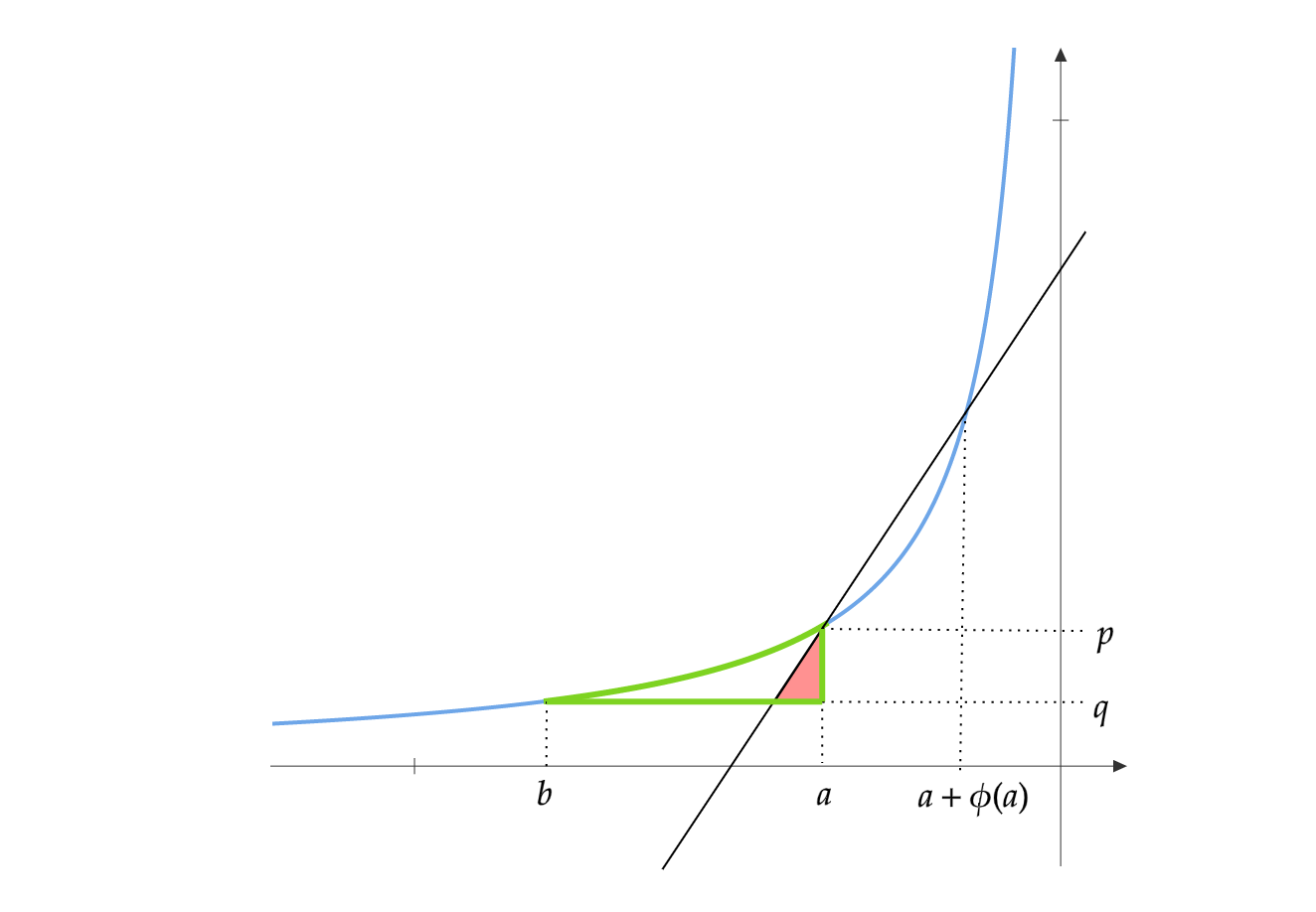Linear Regression with and without Calculus
This post will be about simple linear regression. I will first use calculus to derive an expression. Then I derive same expression in a more intuitive way using linear algebra.
You have \(n\) data point and observation pairs \((a_1,b_1),(a_2,b_2),..,(a_n,b_n)\) where \(a_i \in \mathbb{R}^m\) and \(b_i \in \mathbb{R}\). Let \(A_i \in \mathbb{R}^{m+1}\) be the vector obtained by prepending 1 to vector \(a_i\). The matrix \(A\) has \(A_i\) as its \(i\)th row and \(b \in \mathbb{R}^n\) is the column vector consisting of \(b_i\).
\[\begin{align*} A=\begin{pmatrix} 1 & a_{11} & a_{12} & \cdots & a_{1m} \\ 1 & a_{21} & a_{22} & \cdots & a_{2m} \\ \vdots &\vdots & \vdots & \ddots & \vdots \\ 1 & a_{n1} & a_{n2} & \cdots & a_{nm} \\ \end{pmatrix} \quad b=\begin{pmatrix} b_{1}\\ b_{2}\\ \vdots \\ b_{n}\\ \end{pmatrix} \end{align*}\]We are supposed to find the vector \(x\) such that \(\| b-Ax \|^2\) is minimum. What this means is vector \(Ax\) is as close as possible to vector \(b\).
Using Calculus
The approach is straightforward. Differentiate \(\| b-Ax \|^2\) with \(x\) and equate it to zero. A good reference for identities regarding differentiation with matrices and vectors is the Matrix Cookbook.
\[\begin{align*} \| b-Ax \|^2 &= (b-Ax)^T(b-Ax)\\ &= b^Tb - x^TA^Tb - b^TAx + x^TA^TAx \end{align*}\]\(x^TA^Tb\) and \(b^TAx\) are scalars, so \(x^TA^Tb = b^TAx\)
\[\begin{align*} \| b-Ax \|^2 &= b^Tb - 2x^TA^Tb + x^TA^TAx \end{align*}\]Differentiating this with \(x\).
\[\frac{d( b^Tb - 2x^TA^Tb + x^TA^TAx)}{dx} = -2 \frac{d(x^TA^Tb)}{dx} + \frac{d(x^TA^TAx)}{dx}\]Since \(\frac{d(x^Tc)}{dx} = c\) and \(\frac{d(x^TCx)}{dx} = (C+C^T)x\).
\[-2 \frac{d(x^TA^Tb)}{dx} + \frac{d(x^TA^TAx)}{dx} = -2A^Tb + 2A^TAx\]Equating this to 0.
\[A^TAx=A^Tb\\ x=(A^TA)^{-1}A^Tb\\\]Using Linear Algebra
First a detour in geometry. You are given a point \(z\) and a plane \(P\) in 3 dimensional space. The point closest to \(z\) on \(P\) will be the projection of \(z\) on \(P\). The line joining \(z\) to this projection would be orthogonal to \(P\).

Consider the expression \(Ax\). This can be seen as a subspace spanned by the columns(column space) of \(A\). So \(Ax\) represents a point in the column space of \(A\).
\[Ax=\begin{pmatrix} 1 & a_{11} & a_{12} & \cdots & a_{1m} \\ 1 & a_{21} & a_{22} & \cdots & a_{2m} \\ \vdots &\vdots & \vdots & \ddots & \vdots \\ 1 & a_{n1} & a_{n2} & \cdots & a_{nm} \\ \end{pmatrix} \begin{pmatrix} x_{0}\\ x_{1}\\ \vdots \\ x_{m}\\ \end{pmatrix}\\ = x_0\begin{pmatrix} 1\\ 1\\ \vdots \\ 1\\ \end{pmatrix} + x_1\begin{pmatrix} a_{11}\\ a_{21}\\ \vdots \\ a_{n1}\\ \end{pmatrix} + x_2\begin{pmatrix} a_{12}\\ a_{22}\\ \vdots \\ a_{n2}\\ \end{pmatrix} + \cdots + x_m\begin{pmatrix} a_{1m}\\ a_{2m}\\ \vdots \\ a_{nm}\\ \end{pmatrix}\]In the linear regression problem, we want to find \(x\) such that \(\| b-Ax \|^2\) is minimized. If \(b\) lies in the column space of \(A\), then through Gaussian elimination, we can find \(x\) such that \(Ax=b\) and \(\| b-Ax \|^2 =0\). But in general, \(b\) may be anywhere in the \(n\) dimensional space. So the best thing we can do is find the point \(Ax\) in the column space of \(A\) which is closest to \(b\). This point will be the projection of \(b\) onto column space of \(A\). So the line \((Ax-b)\) will be orthogonal to the column space of \(A\) (will belong to the Left null space of \(A\)):
\[A^T(Ax - b) = 0\\ A^TAx = A^Tb\\ x = (A^TA)^{-1}A^Tb\\\]Although we have an exact expression for finding the optimum \(x\) for linear regression, for large datasets, evaluating this expression is inefficient. In practice, gradient descent methods are used. I will write about gradient descent in one of the posts to come.
